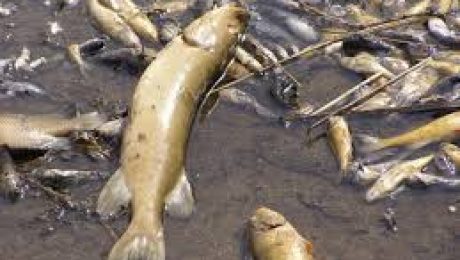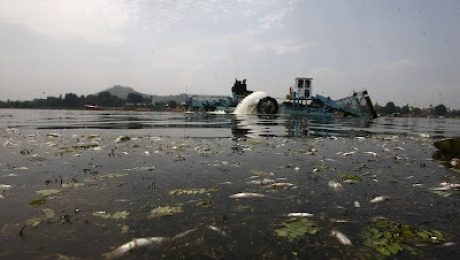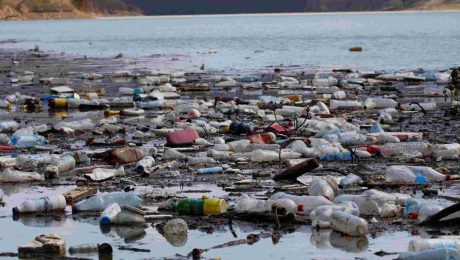Explore the causes and effects of water contamination, including microplastics, chemicals, and stormwater runoff. Learn how to protect lakes, rivers, and freshwater resources.
Residents around Indian Lake in Worcester, Massachusetts, are raising concerns after a spike in fish deaths following the recent application of aquatic herbicides. These chemicals, intended to control the spread of invasive weeds, work by killing the plants outright. But once the plants die, they begin to decompose in the water—a process that consumes dissolved
Following a chemical treatment aimed at controlling aquatic vegetation in Port St. Lucie’s Elkhorn Canal, residents reported what they called the “worst smell in the entire world” as countless fish perished on the canal’s surface. Water tests revealed that dissolved oxygen levels plunged to levels unsustainable for aquatic life—an unintended but severe consequence of the
In June 2024, a chemical herbicide application in Florida’s Elkcam Waterway resulted in a catastrophic fish kill. Within 24 hours, residents reported fish gasping at the surface, and by the end of the week, thousands of dead fish had washed up along the banks. This devastating incident underscores the dangers of using chemicals to manage
Water hyacinth is often seen as a serious problem in lakes and rivers around the world. The fast-growing invasive plant can clog waterways, block sunlight, reduce oxygen levels, and harm native wildlife. Managing large infestations is difficult and expensive, especially in tropical and subtropical regions where the plant spreads quickly. Now, researchers are exploring whether
Milwaukee, a city steeped in history and industry, is emerging as a global leader in addressing one of humanity’s most pressing challenges: water. As the world faces growing concerns over water scarcity, contamination, and climate resilience, Milwaukee has positioned itself at the forefront of innovative solutions. Through strategic investments, world-class institutions, and a commitment to
The Minnesota Pollution Control Agency released new information regarding its ongoing efforts to determine what caused a massive fish kill in Duluth’s Tischer Creek in August. MPCA Communications Specialist Beverly Godfrey says the city of Duluth drained an estimated 1.7 million gallons of chloraminated water into the creek from the Woodland Reservoir over a 15-hour
Although many people might think oceanside cities bear the responsibility to keep plastic and trash out of the water, the Mississippi River can act as a funnel for that trash from the heart of the country to the Gulf of Mexico. The Mississippi River drains more than 40% of the continental U.S. – just how
Funded by a variety of groups including the Massachusetts Water Resources Authority, Massport, the City of Boston, and the Eastern Salt Company, organizers say the program is working and the harbor is cleaner than ever. The program is The Boston Harbor Association’s Marine Debris Cleanup Program, the boat and its two crew members, armed with
With heavy rains this summer, Scott Cassavant and his crew of the Lynyrd Skymmr have been scooping up debris eight hours a day from rivers around the City of Milwaukee, Wisconsin. “When there is a heavy rain with a lot of current flow, what is a living, thriving tree will become uprooted and ends up
Bioengineering is defined by the Michigan Department of Environmental Quality as “using a combination of native planting and natural, or biodegradable materials to provide shoreline protection.” It also is often referred to as softshore engineering or lakescaping. Many shorelines use seawalls. These are a hard surface, such as wood, metal or concrete, that is installed









